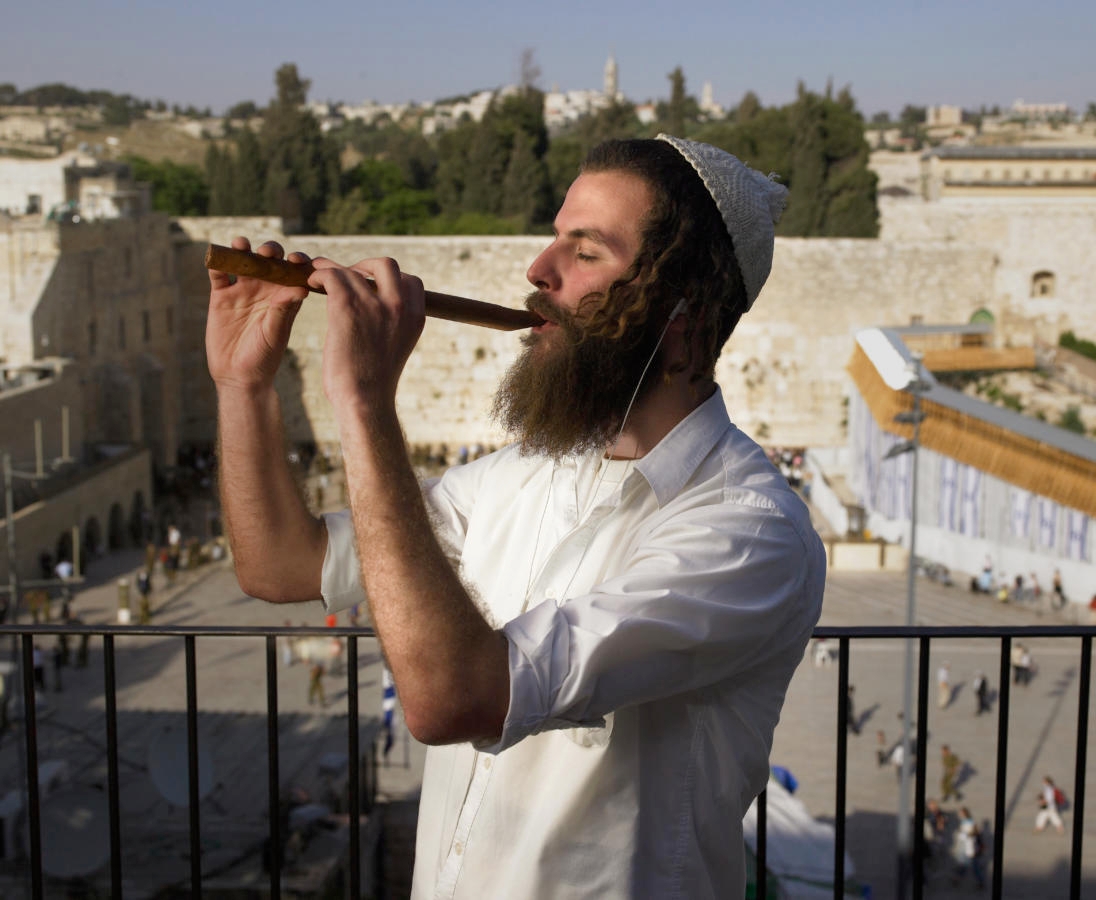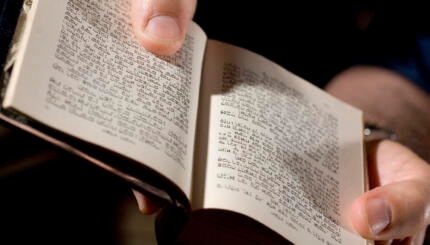Reprinted with permission from Entering Jewish Prayer (Schocken Books).
Music and ritual have been united since the most ancient times. Even storytelling was accompanied by music. The bards were musicians as well as tellers of tales. Certainly the psalms were songs as well as poems, as the headings of many of them indicate. The religions that sprang from Judaism have all used music and chant as part of the experience of worship, and there is every reason to assume that this was influenced by the practice of the parent religion. Over the centuries, music that accompanies worship has been developed into a high art.
The Talmud teaches that “If one reads [Scripture] without chant or studies [Mishnah] without melody, of him is it written, ‘I gave them laws that were not good’ (Ezekiel 20:25).” Melody adds not only to the beauty but even to the quality of the words. To this day, learning in traditional yeshivot is done to the accompaniment of a kind of singsong melody. The Torah is not read during the synagogue service; it is sung.
Cantillation of Biblical Texts
The chanting of the Torah follows notations which were applied by the classical tenth-century Masoretes (those who carefully preserved the text of the Torah). Each sign (trop–actually from a Greek word, tropos, meaning “manner”) indicates a musical phrase. There are various melodies for this chanting, differing among the ethnic groups that make up the Jewish people, but there are similarities between them, and all of them help to clarify the way in which the Hebrew words are to be put together. They indicate where a phrase begins or ends, and actually aid in interpreting the meaning of the text.
With your help, My Jewish Learning can provide endless opportunities for learning, connection and discovery.
These same signs are applied to all the books of the Bible, but they have different musical values depending on which book is being chanted: the Torah, the Prophets, or different books of the Writings. One must learn to read not only a particular sign but to know how it is sung when found in different texts.
Since there was music in the Temple (the choir of Levites who sang the appropriate psalms accompanied by musical instruments), it is likely that this practice would have been taken over when psalms and other prayers came to be recited in synagogues.
Nusah: Musical Modes for Prayer
In regard to prayer itself, there are no musical notations in the printed Siddur, but there is a musical tradition called nusah which has been transmitted from generation to generation. Nusah refers to the musical motifs that are utilized in various combinations when chanting the prayers. The nusah sets a pattern for a particular service, much as a leitmotif does for a character in an opera.
These musical modes differentiate between one service and another. Weekday nusah has one set of tones, the Sabbath another, the holidays yet another, and the High Holy Days a completely different one. There is one tune for the Sabbath day and another for the conclusion of the Sabbath. These tunes reflect the mood of the time. We begin the Sabbath, for example, with exaltation and joy. We conclude with nostalgia and the sadness of parting. The melody creates the mood and reflects the appropriate feeling that should accompany the words. Here too the musical traditions differ from one ethnic division of Judaism to another and reflect the music of the place where each group lived.
When properly understood, nusah is a great aid to prayer. A worshiper hears the leader use a certain melody appropriate to Rosh Hashanah, for example, and this helps set the mood for that day. Obviously this depends also on the knowledge that the worshiper brings or the memories he or she has acquired over a lifetime.
The one instance with which most of us are familiar is the Kol Nidre melody on Yom Kippur, which seldom fails to stir deep feelings within us, despite the fact that the words of the Kol Nidre are particularly lacking in emotional appeal. In this case it is the melody and the implication of the whole setting that moves us. One would have to go into the psychology of music to know what there is about the combination of tones that so affects the human being, but all of us know its power from personal experience. From the passion of opera to the passion of the most modern expressions of popular music, we see the way in which masses of people can be moved to ecstasy, to tears, to excitement by the sound of music.
Niggun: A Wordless Melody
The Hasidic practice of emphasizing song was part of their method of attaining true prayer. The wordless melody-the niggun–was a brilliant method of demonstrating the extrasemantic dimension of prayer. We may even go so far as to say that words can be impediments to the deepest communication, for what words can adequately express our feelings about God? Nor can they truly capture the depths of our emotions at times of grief or of overwhelming joy. In the words of the Hasidic master R. Dov Baer, “The ecstasy produced by melody … is in the category of spontaneous ecstasy alone, without any choice or intellectual will whatsoever.”
Words can become idols. They concretize that which cannot be concretized. Ideas can intellectualize experience. Melody is pure soul. One understands why many western congregations have included “readings”–translations of prayers without any melody–into the service. But we would be well advised not to abandon the use of chanting in prayer. We need not turn the service into a performance and the cantor (hazzan) into a performer in order to avail ourselves of the musical tradition to enhance our worship. Prayer is not a spectator sport. The role of the hazzan is to help us pray, to be the expert we may not be, to inspire us and guide us in a true experience of prayer.
Who Sings, Who Leads
There are two basic methods of using melody in prayer: the Ashkenazic and the Sephardic. In the first, most of the prayer is said individually in a singsong pattern, with the leader of the service beginning and concluding each section and leading the chanting of certain appropriate portions. In the second, the congregation chants most of the prayers aloud in unison, word by word, with certain sections chanted by individuals. In either type of service, melody adds an important dimension to the experience of prayer.
Hasidic
Pronounced: khah-SID-ik, Origin: Hebrew, a stream within ultra-Orthodox Judaism that grew out of an 18th-century mystical revival movement.
Kol Nidre
Pronounced: kohl NEE-dray or kohl nee-DRAY, Origin: Aramaic, literally "all vows," this is the name for the service and central prayer on Yom Kippur eve, which is considered the holiest night of the year.
Talmud
Pronounced: TALL-mud, Origin: Hebrew, the set of teachings and commentaries on the Torah that form the basis for Jewish law. Comprised of the Mishnah and the Gemara, it contains the opinions of thousands of rabbis from different periods in Jewish history.
Torah
Pronunced: TORE-uh, Origin: Hebrew, the Five Books of Moses.



